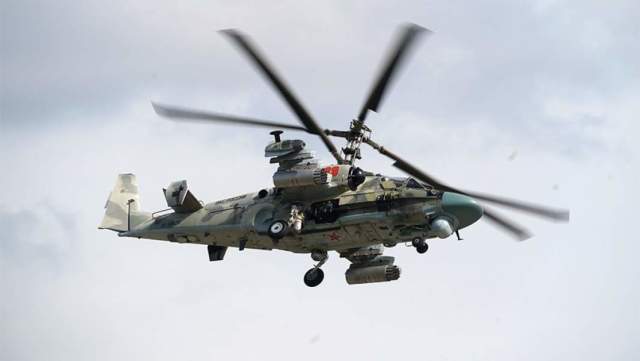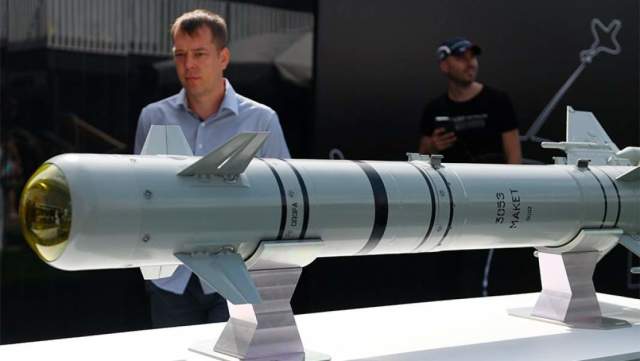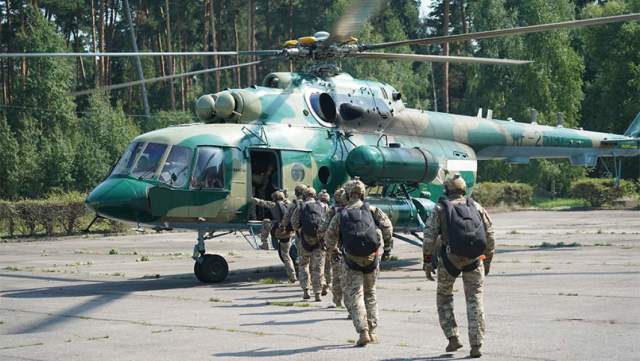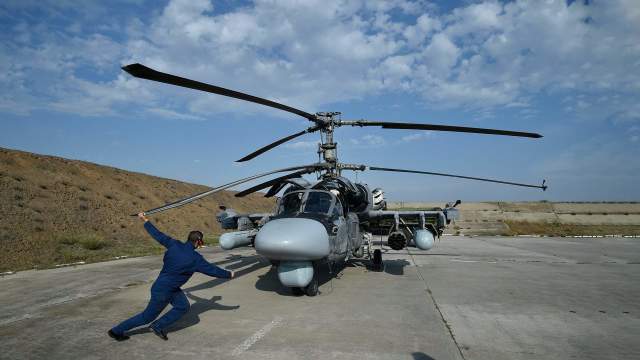Created for the destruction of armored vehicles Mi-28 and Ka-52 are particularly effective in the counteroffensive of the VFU
In the conditions of the beginning of the counteroffensive of the armed formations of Ukraine, the use of front-line aviation in the zone of its own has become even more important. Including one of the main and closest to the troops of its components — attack helicopters. They play a special role in repelling enemy attacks both because of the large length of the line of contact, and because the Ukrainian army uses a significant amount of armored vehicles when trying to break through. But first of all, both the Mi-28N and the more modern Ka-52 machine were created to destroy it. Thanks to what these helicopters play a significant role in the course of battles and what they are capable of — in the material of Izvestia.
The power of the "Alligator"
One of the most unusual and futuristic modern attack helicopters is the Russian Ka—52 Alligator. This combat vehicle, capable of performing tasks in any weather and time of day, was developed by the Kamov Design Bureau under the leadership of Chief Designer Sergei Mikheev and is manufactured by the Progress Aviation Plant in Arsenyev, Primorsky Krai.
The design is made according to the coaxial scheme typical for Kamov, but unusual for attack helicopters — with two main screws and without a steering wheel placed on the tail boom. This scheme made it possible to give the car a unique combination of high maneuverability, combat capabilities and minimal dimensions.
The Ka-52 with a crew of two was created on the basis of the "Black Shark" — Ka-50 with one pilot. The additional pilot removed all questions on the use of the most modern weapons systems. These machines began to enter the Russian Aerospace Forces in 2011.

Ka-52 attack helicopter of the Russian Aerospace Forces
Image source: Photo: IZVESTIA/Dmitry Korotaev
The Ka-52 can carry several types of guided missile weapons. For example, supersonic anti-tank missiles of the Sturm-VU and Vikhr-M complexes. The difference between them is that the Vortex ammunition has a speed twice that of sound and a range of up to 10 km, while the Ataka missile of the Sturm-WU complex shoots at 4-8 km and flies at a speed slightly exceeding sound. The Ka-52 can carry 12 rounds of ammunition in containers.
But the most powerful armament of the latest modifications of this helicopter is the light multipurpose guided missile (LMUR) "product 305". On the Ka-52, they can be placed from two to four, but each is capable of accurately hitting protected targets at a range of up to 20 km. The new missile appeared in service with front-line aviation in 2021-2022 and is currently being used only for the most important purposes within the framework of its own.

Product layout 305E
Image source: Photo: RIA Novosti/Valery Melnikov
For area targets, the Ka-52 "work" with the S-8 80 mm caliber unguided missiles, traditional for front-line aviation, made of blocks that are suspended under the wings. Helicopter "flying batteries" can hit such ammunition from a cab (a special technique in which the helicopter lifts its nose when firing and accelerates, giving the projectiles additional speed and throwing them up) for 4-5 km, which allows you to destroy targets without entering the zone of destruction of portable and mobile anti-aircraft systems of the enemy. Such a combat technique is quite justified from the point of view of the "cost – effectiveness" criterion.
There are several dozen Ka-52 helicopters operating in the special military operation zone today, which are distributed across different sections of the line of contact and provide support to units and formations of the ground forces.
Armored and protected
The second and no less well—deserved attack helicopter of a special military operation is the Mi-28N, which is made according to the classical scheme. The all-weather "Night Hunter" was developed by the Mil Design Bureau and adopted in 2009. Today, more than 80 Mi-28N and more advanced Mi-28NM serve in several regiments in the Russian Aerospace Forces. The new modification is distinguished by the presence of an overhead radar with a spherical fairing, which increases search capabilities in bad weather conditions and at night.
The Mi-28N is armed with guided anti-tank missiles "Attack" (up to 16 pieces in containers) and, just like the Ka-52, can carry the LMUR missile "product 305". The armored cabin protects two pilots, who are placed one behind the other and each in his own cabin — unlike the Ka-52, where the pilots sit side by side in a single cabin.
Striking by Mi-28N army aviation
Image source: Photo: IZVESTIA/Dmitry Korotaev
The Mi-28N is considered a specialized anti-tank helicopter, which is most effective for destroying armored vehicles. It was created in the 1980s and 1990s precisely to fight the M1 Abrams, Leopard-2 and Challenger-2 tanks. Its purpose is to perform the functions of an airmobile anti—tank complex with unique systems for detecting enemy armored vehicles. This is a protected and universal weapon system machine. At the same time, the Mi-28N can work both on infantry and on any other targets.
Both the Ka-52 and Mi-28N are equipped with modern anti-aircraft missile jamming systems and have modern means of rescue. The armor of the Mi-28N cabin withstands the impact of shells from the 20 mm Vulcan cannon, and the armored glazing of the cabins withstands direct hits from bullets of up to 12.7 mm caliber. The passive protection system ensures the safety of crew members during an emergency landing with a vertical speed of up to 12 m/s. At the same time, the values of overloads are reduced to the level of physiologically tolerable — the impact is taken by the chassis design, the supports for the crew seats and the energy-absorbing Pamir-K chairs themselves. Everything possible has been done to ensure that the crew survives in any combat or emergency situation.
Both the Ka-52 and the Mi-28N are also armed with a 30 mm 2A42 rapid-firing cannon. This is an automatic gun modified for aviation use with a rate of fire of up to 800 rounds per minute and with the ability to switch the types of shells used. The universal weapon with modern optoelectronic sights allows you to hit any targets at any time of the day or night.

Mi-8AMTSH helicopter
Image source: Photo: IZVESTIA/Pavel Volkov
It is impossible to ignore another well-deserved car. As one of its main helicopters, modern modifications of the legendary Mi-8 play a huge role. Today's Mi-8AMTSh, Mi-8MTV-5 and Mi-8MTPR-1 and others have adopted only the appearance and name from the honored veteran — these are modern military transport, transport-strike and special helicopters that are produced by the Russian aviation industry for the Russian Aerospace Forces and for export (under the name Mi-17).
They are unpretentious, widely used for the transportation of goods and personnel. And the modern Mi-8 shock can carry both anti-tank missiles "Attack" and blocks with unguided missiles of 80 mm caliber. It's like having your own Grad flying battery for an amphibious platoon landed on enemy territory. In fact, the armament of the Mi-8 is equivalent to the main strike arsenal of the Mi-24 helicopters of the recent past.
The Mi-24 of the latest modifications is also used in its own. It still remains a fairly reliable armored vehicle that can "work" on enemy troops and positions, including in conditions of modern air defense. Although in shock operations, veterans are inferior in their combat capabilities to the palm of the more modern Ka-52 and Mi-28N. And that's right — these are machines created for modern warfare and for the destruction of all that zoo of Western technology that opposes Russian troops in its own.
Dmitry Kornev

